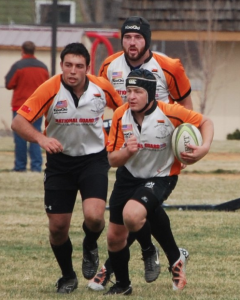
It’s important to understand that a concussion is a functional injury, not a structural one. While neuroimages like CT-Scans and MRIs may come back normal, damage to the cells of the brain can change how the brain functions. For years, most concussion assessments involved coaches or parents asking athletes if they had any symptoms, such as headache. While symptom scale checklists are always warranted, they should not be used as the sole indicator of whether or not an athlete’s brain has healed.13 It is widely known that some athletes will hide their symptoms for fear of not being allowed to continue to play. Athletes are often unaware of potential long-term effects and their will to play through the pain is often more convincing.
Because of this and because of the nature of the injury, it is recommended that coaches, parents, and athletic trainers integrate objective measurements of brain function. Such tests include the Standardized Assessment of Concussion (SAC), the Balance Error Scoring System (BESS), and neurocognitive, software-based assessments such as ImPACT™. Each of these instruments is detailed in this newsletter and each can be used as a supplement to the Symptom Scale Checklist for more reliable return to play decision-making.